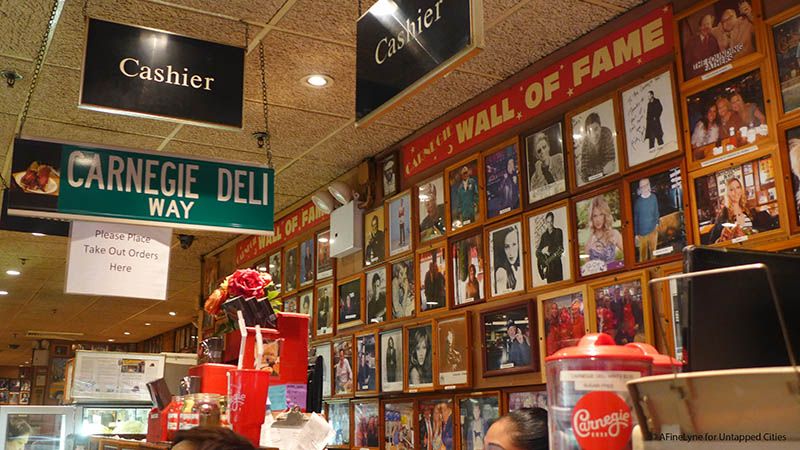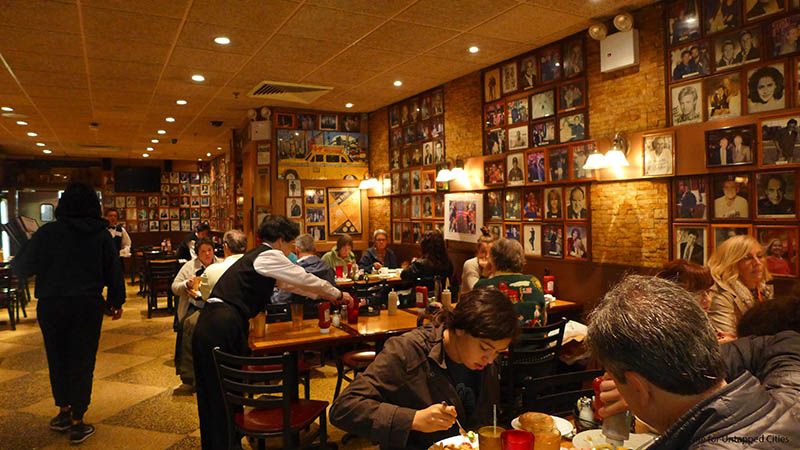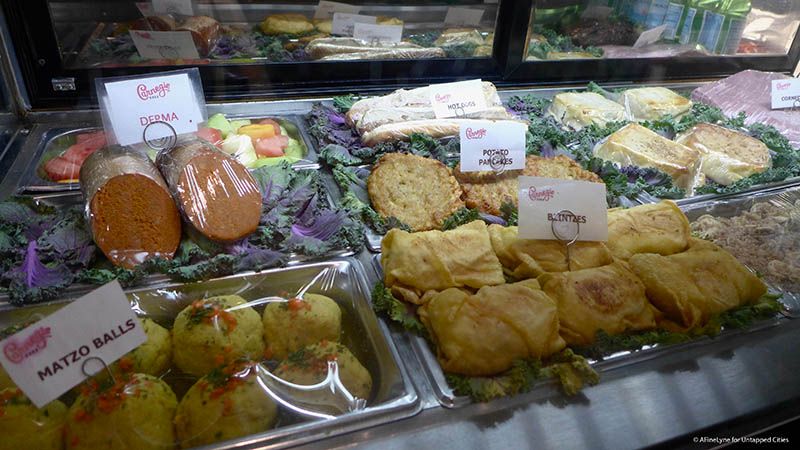The Berkshires Bowling Alley that Inspired "The Big Lebowski"
It’s been 36 years since the release of The Big Lebowski, the irreverent cult comedy by Joel and Ethan


As everyone knows, New York City’s Carnegie Deli has closed after 79 years in business. But this Midtown institution just north of Times Square is notorious for more than just overstuffed pastrami sandwiches. On May 10, 2001, at the height of the theater rush hour, five people were shot in an apartment above the fabled noshery. This became known in the tabloids as “the Carnegie Deli Massacre.” (Since the family that owns the deli also owns the building, this is technically correct.)

The apartment was rented by Jennifer Stahl, a washed up actress; the highpoint of her career was a bit role in Dirty Dancing (1987). To support herself, she had turned to drug dealing—specifically, high grade marijuana. Her apartment was decorated with poster-size menus of different brands of weed. On the evening in question, she was hanging out with four friends: Anthony Veader, 37; Rosemond Dane, 36; Charles Helliwell III, also 36; and Stephen King, 32—no relation to the horror author.
At 7:27 PM, a surveillance camera showed two men entering the apartment building. Several minutes later, the same two men left, but exactly what transpired in between became a matter of dispute. What is known for sure is that Stahl’s guests were bound with duct tape and shot in the back of the head, execution style; Stahl herself was also shot, but not in the head, and not bound. The two men fled with an unspecified amount of money and marijuana.

Miraculously, Veader and Dane survived; Veader even managed to untie himself, crawl to a phone and dial 911, although precious time was lost because he didn’t know the address. The rest were not so lucky: Helliwell and King died instantly, and Stahl died a few hours later.
The next day the police announced two suspects: Andre Smith, 31, and Sean Salley, 29. Smith turned himself in a couple of weeks later, but Salley remained on the run for several months. He was finally apprehended in Miami after his photo was broadcast on America’s Most Wanted. Salley was arraigned on August 3rd, 2001.
Jury selection for the trials began on April 29th, 2002. Because Salley and Smith accused each other of committing the crime, there was one court room but two separate simultaneous trials, and two separate juries.
Salley claimed he just wanted to score some weed from Stahl, but Smith pulled a gun on him and forced him to participate in the robbery. Salley admitted to “accidentally” shooting Stahl, but claimed Smith deliberately shot the other four victims to cover up the crime.
Smith, for his part, maintained it was all just a case of mistaken identity. He was nowhere near the scene of the crime, let alone participated in armed robbery and murder.

On June 2nd, 2002, both Smith and Salley were convicted of three counts of second degree murder—one conviction each for the deaths of Helliwell, King, and Stahl. They were convicted of second degree murder instead of first because it could never be proven beyond a reasonable doubt who fired the gun.
On July 30th, 2002, Smith and Salley were sentenced to three consecutive terms of twenty-five years to life in prison—effectively, life without parole. As far as it is known, they are still rotting behind bars. Smith would be 45; Salley, 43.
But the strangest thing about the shootings was the date. In the 1970s it was all too common for drug dealers to rip each other off, and kill each other in the process. But by 2001, Times Square was “cleaned up.” Things like this just didn’t happen any more.

This led to handwringing editorials in the newspapers about Times Square slipping back into the “bad old days.” But the feared regression never occurred, and today Times Square is safe for tourists—if not pastrami lovers. As for the apartment, it’s long since been cleaned up, and is available to rent. No word what happened to the marihuana posters.
This month, we’ll be hosting another tour of the remnants of Gritty Old Times Square of the 1970s, led by the author of this article. Back then, the neighborhood was an exciting, dangerous and racially and sexually diverse place, frequented by both locals and tourists. Today, most of Times Square has been carefully obliterated by generic hotels, soulless office buildings, and Walt Disney musicals, but there are still a few vestiges of its seedy past—if you know where to look. Join us:
Next, check out the Top 10 Secrets of Times Square.
Subscribe to our newsletter